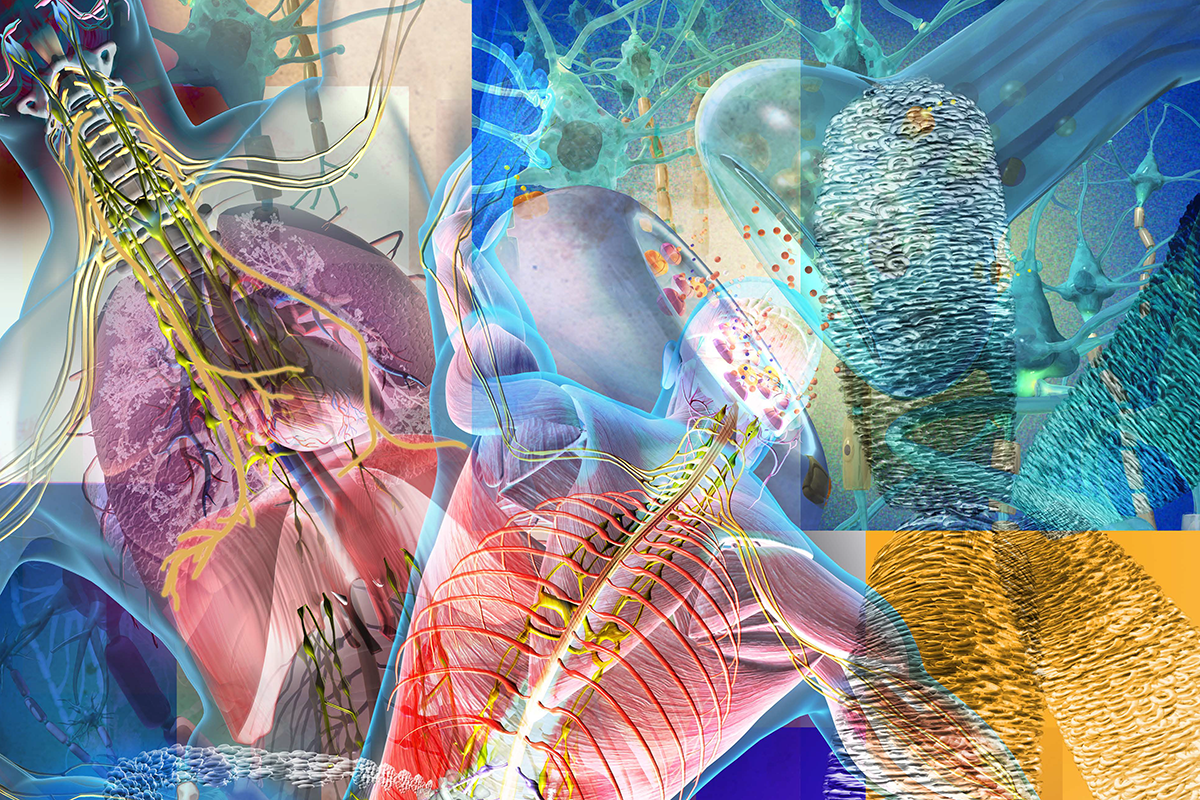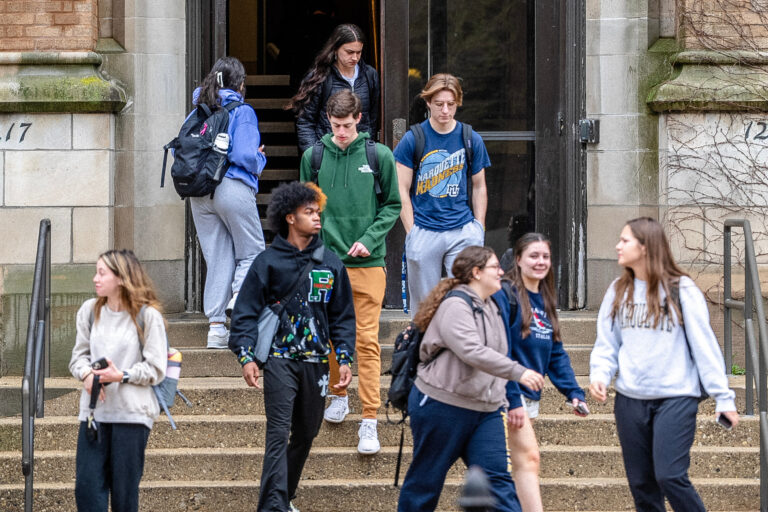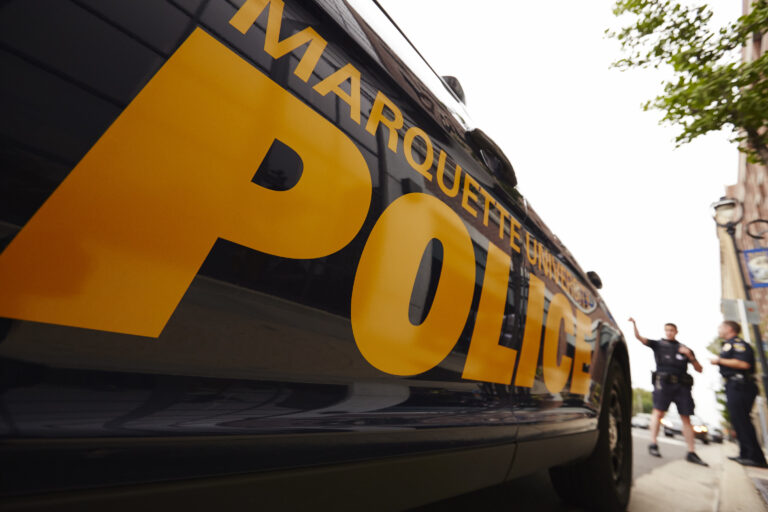By Jennifer Walter, Comm ’19 and Carrie Arnold, illustration by Linda Nye, photos by Kat Schleicher
Progress in spinal cord injury research and therapies is rare. But in the College of Health Sciences, faculty researchers and clinicians from several fields are pursuing promising cutting-edge strategies at scales ranging from microscopic axonal connections in the spinal cord to signals traveling through peripheral nerves to training involving myriad muscles and organs. Together, this work is offering spinal cord patients true hope.
This feature from the College of Health Sciences magazine takes a dive into the depths of spinal cord research and rehabilitation being done in the college.

Genes in Harmony
Dr. Murray Blackmore is employing precise combinations of genes to stimulate growth in spinal axons with aims of re-establishing severed connections and restoring a range of functions. Read more.
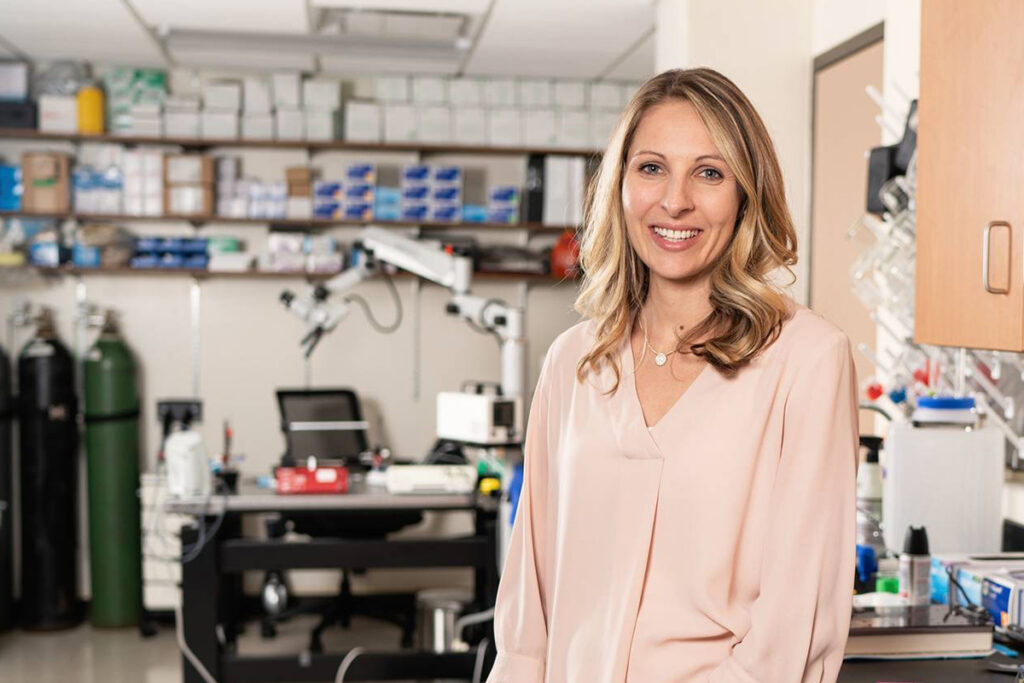
Breath Work
Dr. Kristi Streeter explores the mysterious interaction through which signals from the diaphragm may help rewire the brain to help those with spinal cord injuries breathe better. Read more.
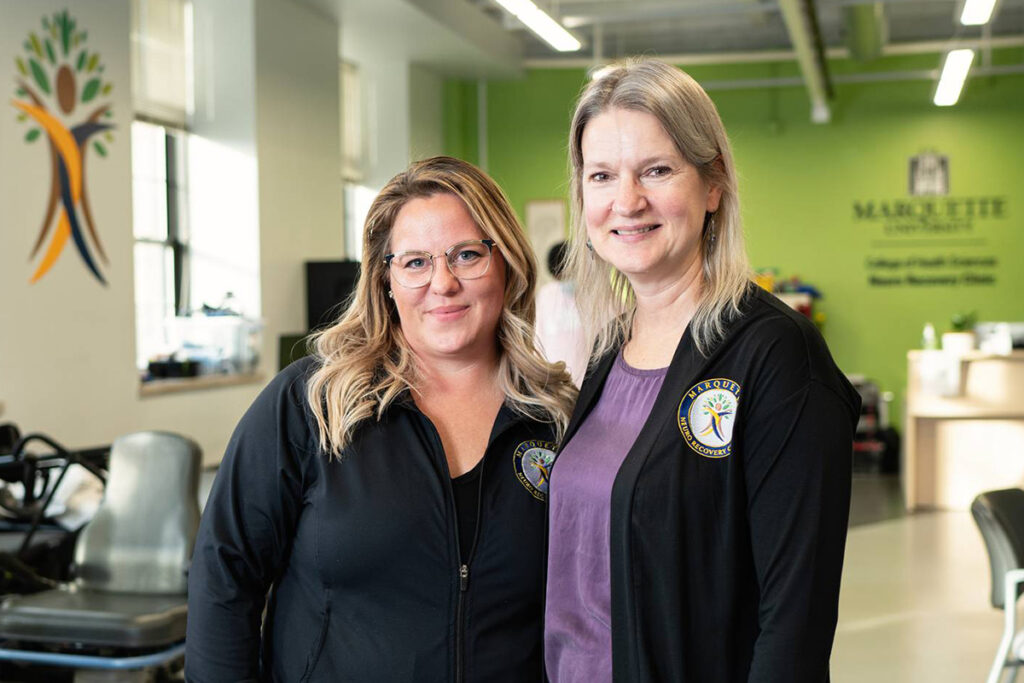
Clinic of Regained Hope
Scientifically verified therapies, advanced equipment and clinical experts make the Neuro Recovery Clinic a unique regional resource. Read more.
